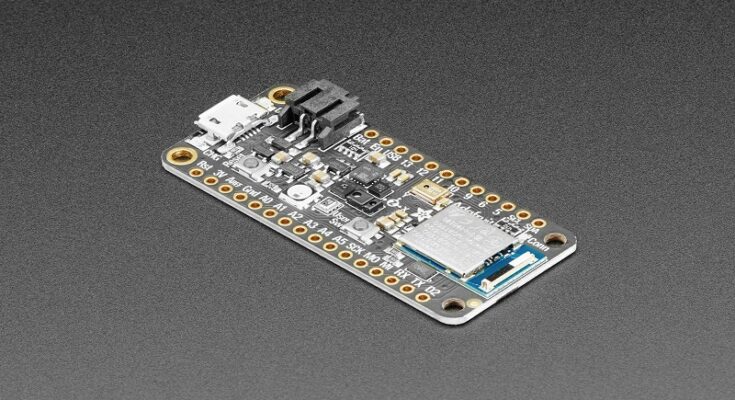Humidity is the measurement of the amount of water vapour in the atmosphere. Instruments called humidity sensors measure the humidity and air temperature in a space and convert the data into an electrical signal. From the little ones seen in cell phones to larger, industrial-grade systems, modern humidity sensors come in a variety of sizes and configurations. They are quite adaptable.
How Do Humidity Sensors Function?
A thermistor, which is used to monitor temperature, is typically included in humidity sensors together with a humidity sensing element. Three basic categories of humidity sensors exist, and they each use a slight change in the atmosphere to track humidity. A few of these are:
1. Capacitive
One of the most popular types of relative humidity sensors is the capacitive humidity sensor. A thin metal oxide is sandwiched between two electrodes in capacitive humidity sensors, which use this technique to monitor relative humidity. The electrical capacity of the metal oxide will fluctuate as the relative humidity of the atmosphere varies. These linear sensors are capable of measuring relative humidity in the range of 0% to 100%. The capacitive humidity sensor can be utilized for commercial, industrial, or weather-related purposes.
2. Resistive
This sensor uses salt ions to determine the electrical impedance of the atoms. The resistance of the electrodes in the salt media changes as the humidity changes. These sensors are among the most prevalent RH sensors and can store an electric charge.
These sensors are less expensive than other varieties and can be utilized for remote monitoring applications, such as in wide spaces where there is a significant distance between the signaling circuit and the sensor element.
3. Thermal
The type of thermal sensor is the one that measures the AH (or absolute humidity). For locations with high temperatures or corrosive conditions, they work excellently. With this humidity sensor, one heat sensor measures the surrounding air while the other is covered with dry nitrogen to measure the humidity of the environment.
The humidity can then be measured using the difference between the two sets of data that were gathered. In other words, they determine the absolute humidity by comparing the thermal conductivity of the dry and humid air.
Measurement of humidity
The food and pharmaceutical industries strictly monitor relative humidity measurement to guarantee product quality during manufacture, packaging, storage, and transportation. For the monitoring and control of environmental and process conditions across the industry, including explosive atmospheres, we provide a wide selection of precision humidity measurement tools, including handhelds, data loggers, and transmitters with analog and digital outputs.
The ratio between the amount of water vapor present in the environment at a given time and the amount of water vapor necessary to saturate the air is what sensors measure when calculating relative humidity. The amount of water vapor present is measured by humidity, and many of our equipment can immediately provide this information in the form of mixing ratios (g/kg), for instance.
The amount of humidity has an impact on the health and well-being of people as well as all types of materials. To assure product quality, humidity measurement is crucial during production operations across the industry, in packing, and during product storage. It is a vital need that needs to be adequately documented in the highly regulated pharmaceutical and food businesses. Humidity levels at museums and galleries must be managed to conserve artefacts.
Weather reports must measure the air humidity in addition to the temperature and other variables. Since a slight temperature change can have a big impact, it is critical to measure temperature and humidity together.
We provide a wide variety of precision humidity measurement tools, including handhelds, data loggers with continuous environmental remote monitoring systems (RMS), and measurement transmitters with analog and digital outputs, that are specified by top businesses throughout the world.
Rotronic manufactures an extensive selection of integrated temperature and humidity probes appropriate for all applications, including potentially explosive ATEX-rated gas and dust conditions.
Humidity can be measured in three different ways: relative, absolute, and specific.
Absolute humidity is a measurement of the actual amount of water vapor in the air, regardless of the temperature of the air (units are grams of water vapor per cubic meter volume of air). Absolute humidity increases as the amount of water vapor increases. For instance, a cubic meter of air at a temperature in the middle 80s may hold a maximum of roughly 30 grams of water vapor.
The quantity of water vapor that air is holding about the amount it can hold at a given temperature is known as relative humidity, which is stated as a percentage. As warm air can hold more water vapor (moisture) than cold air, it will have a greater relative humidity despite having the same absolute/specific humidity. Relative humidity of 50% indicates that the air is holding 50% of the water required to make the air saturated on that day (at that particular temperature). The relative humidity of saturated air is 100 percent.
The ratio of the partial pressure of water vapor in combination with the saturated vapor pressure of water at a specific temperature is another way to describe the relative humidity of an air-water mixture (See what is vapour pressure). As a result, both the temperature and the water content of the air affect its relative humidity.
The weight of water vapor present in a unit weight (quantity) of air is referred to as specific humidity (expressed as grams of water vapor per kilogram of air). The concepts of absolute and specific humidity are relatively similar.
Where may a humidity sensor be used?
These sensors can be used for a wide range of applications, including air quality monitoring systems and cell phones. Remember that air quality monitoring devices employ humidity sensors that are significantly larger than those found in cell phones. These sensors have a variety of applications in the medical and meteorology fields as well. For instance, if the humidity in your room is excessive and making you feel uncomfortable, you may quickly fix the situation by pressing a few buttons on the air conditioner. The humidity sensors that are installed within the air conditioner to measure the air’s temperature and moisture content are partially to blame for this. Additionally, by maintaining the proper degree of air moisture, they can aid in saving those who have respiratory difficulties.




